
Get ready for a celestial spectacle in August! This month promises a series of exciting events in the night sky, including many conjunctions, meteor showers, and oppositions of asteroids and Saturn. Whether you’re a seasoned stargazer or a curious observer, there’s plenty to look forward to in the awe-inspiring cosmic events unfolding above us.
Would you like to be notified of stargazing events?
Summary of Meteor Showers in August 2023
- Piscis Austrinids: Start on July 15; peak on July 28; end on August 10.
- Southern δ-Aquariids: Start on July 12; peak on July 30; end on August 23.
- α-Capricornids: Start on July 3; peak on July 30; end on August 15.
- η-Eridanids: Start on July 31; peak on August 8; end on August 19.
- Perseids: Start on July 17; peak on August 12; end on August 24.
- κ-Cygnids: Start on August 3; peak on August 17; end on August 25.
- Aurigids: Start on August 28; peak on August 31; end on September 5.
Summary of Conjunction in August 2023
- Conjunction of the Moon and Saturn in Aquarius on August 3.
- Conjunction of the Moon and Jupiter in Aries on August 8.
- Conjunction of the Moon and Mercury in Leo on August 18.
- Conjunction of the Moon and Mars in Virgo on August 18.
- Conjunction of the Moon and Saturn in Aquarius on August 30.
Astronomical Events for August 2023
On August 3, there will be a conjunction of the Moon and Saturn. The two celestial bodies will share the same right ascension and pass within 2°28′ of each other in the constellation of Aquarius. At nearly the same time, the two objects will also make a close approach, known as an appulse. Although no longer sharing the same right ascension, the two bodies will get even closer to each other at 2°15′. The Moon (waning gibbous, 17 days old) will be at apparent magnitude -12.7, and Saturn 0.5.


Then on August 8, the η-Eridanids meteor shower will peak. This variable rate meteor shower was recently discovered. Meteors will appear to radiate from the constellation of Eridanus and streak across the sky at an average estimated speed of 64 km/s. Some meteors can also be seen between July 31 and August 19.
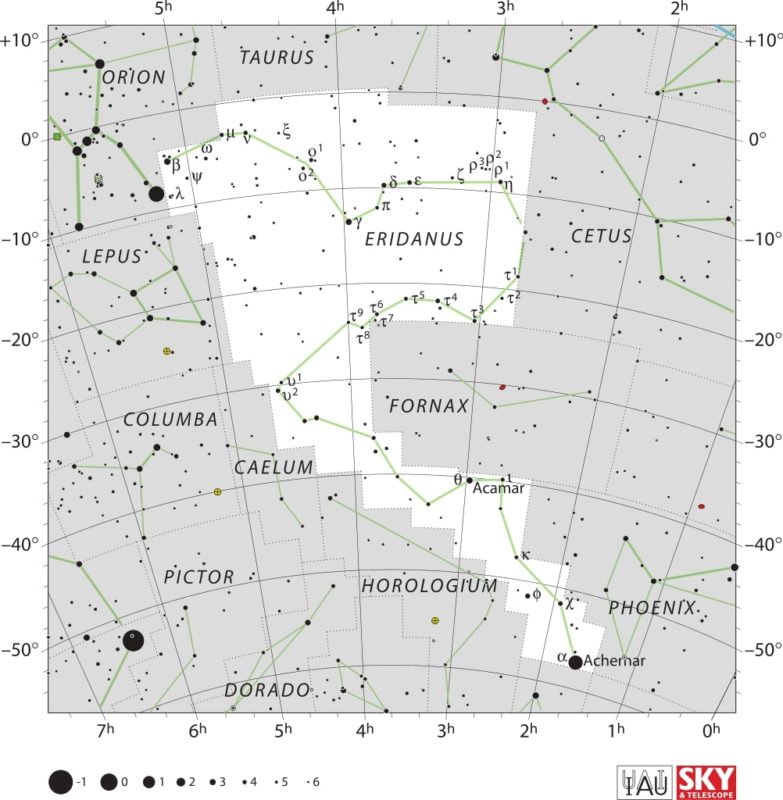

On the same night, we will have a conjunction of the Moon and Jupiter. They will pass within 2°52′ of each other, sharing the same right ascension. At about the same time, the two bodies will make an appulse, also known as a close approach. They will get even closer at 2°39′ of each other but no longer sharing right ascension. Look in the constellation of Aries. The Moon (waning crescent, 22 days old) will be at apparent magnitude -11.9 and Jupiter -2.5.


On August 9, we will be able to witness a close approach of the Moon and M45, which is also known as the Seven Sisters, Messier 45, or most commonly – the Pleiades. This open star cluster is also an asterism in the constellation of Taurus, where you should look for this conjunction. This is the most obvious star cluster you can observe with the naked eye. The two objects will pass within 1°20′ of each other. The Moon will be 23 days old (a waning crescent) at apparent magnitude -11.6, while M45 will be at magnitude 1.3.


Then on August 10, asteroid 10 Hygiea will be at opposition. Since the asteroid will be exactly opposite to the Sun, it will reach the highest post in the sky at around midnight local time, regardless of where in the world you are. It will be in the constellation of Aquarius. At about the same time, Hygiea will also make its closest approach to Earth (perigee) at 2.039 AU and reach a peak brightness of apparent magnitude 9.7. Even at its brightest, this large asteroid is still too faint to be visible to the naked eye. You will need binoculars or a telescope. Hygiea was discovered in 1849 by Annibale de Gasparis and named after the Greek goddess of health, cleanliness, and hygiene. Interestingly her name is the source for the word “hygiene”. With a mean diameter of about 434 km, Hygiea is the fourth largest asteroid in the solar system.
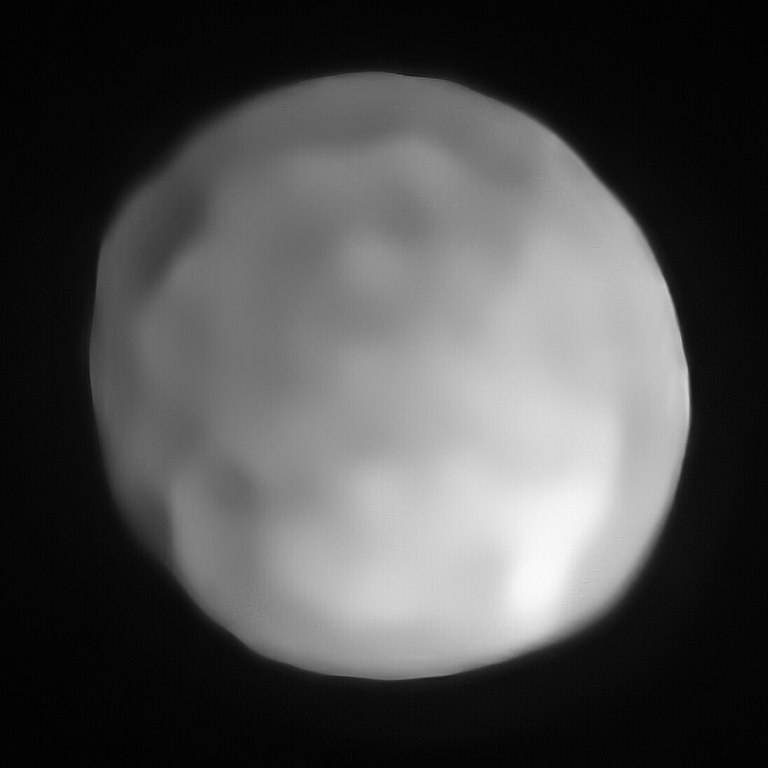

On the night of August 12-13, the Perseid meteor shower will peak. It is by far the largest meteor shower with an average of 150 meteors per hour during the peak, assuming ideal conditions. Some meteors can also be seen between July 17 and August 24. They will appear to radiate from the constellation of Perseus, as the name implies. The meteors will enter the atmosphere at 59 km/s, which is on the faster side for a meteor shower. The Perseids originate from the comet 109P/Swift-Tuttle.


Later in the month, on the night of August 17-18 the κ-Cygnid meteor shower will peak. Unlike the previous meteor shower, this one is tiny. It only has an average of 3 meteors per hour during the peak, and that’s assuming perfect viewing conditions. Some extra meteors could also be seen during August 3 to August 25. The meteors will have an average speed of 25 km/s. This is on the slower side for a meteor shower. The Kappa Cygnids will appear to radiate from the constellation of Cygnus, more precisely near the star Kappa Cygni.
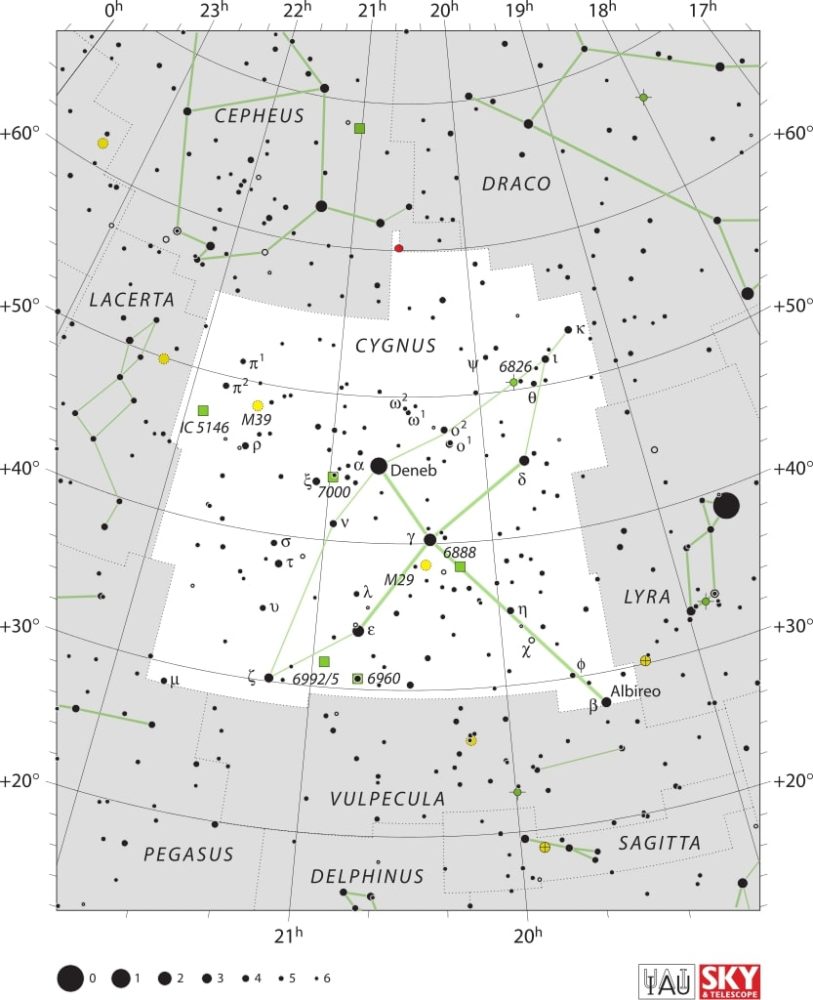

On the morning of August 18, we will have a conjunction of the Moon and Mercury. The two bodies will pass within 6°56′ of each other, while sharing the same right ascension. Look in the constellation of Leo. The Moon (a waxing crescent, 2 days old) will be at apparent magnitude -9.0, and Mercury 0.6. This means they will be visible to the naked eye. Keep your eyes safe during daytime observations and never point binoculars or a telescope directly at the Sun.
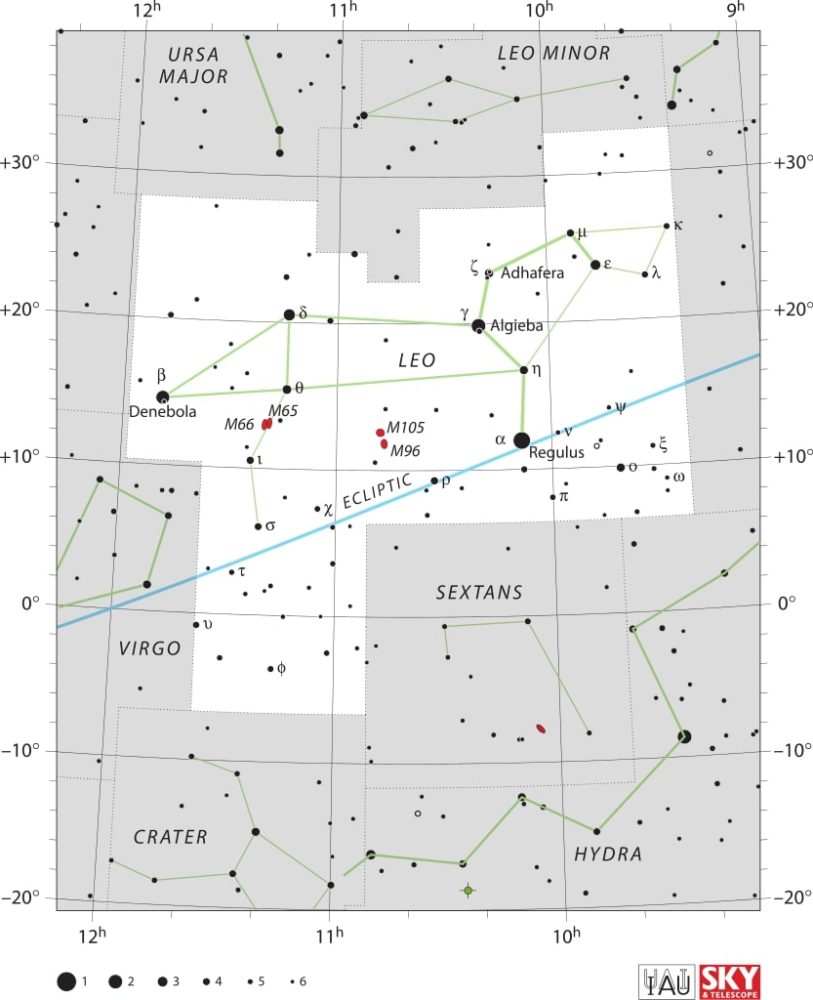

Then on the night of August 18, there will be a conjunction of the Moon and Mars. Since the morning, the Moon will have moved to the constellation of Virgo to meet Mars at 2°10′ of each other, while sharing the same right ascension. Nearly two hours later, the two bodies will get even closer to each other at 1°55′ of separation but no longer sharing the same right ascension. This is called an appulse or a close approach. The Moon (a waxing crescent, 2 days old) will be at apparent magnitude -9.4, and Mars 1.8.
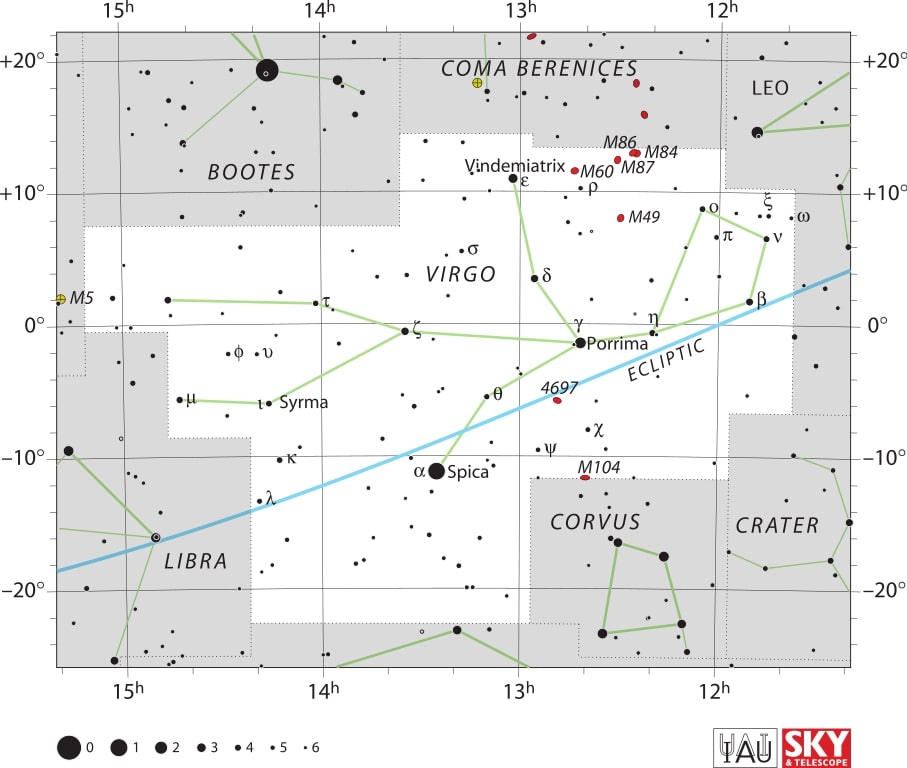

On August 26, asteroid 8 Flora will be at opposition. Regardless of where in the world you are, the asteroid will reach the highest post in the sky at around midnight local time. This is because it will be exactly opposite to the Sun. At around the same time Flora will reach perigee, which means its closest approach to the Earth, at 0.999 AU. At that time it will reach peak brightness of apparent magnitude 8.5 in the constellation of Aquarius. This is too faint for the naked eye, and you’ll need at least binoculars, or preferably a telescope. Flora is a large asteroid of the main belt with a mean diameter of 146 km. It is also the seventh-brightest asteroid. The asteroid was discovered by J. R. Hind in 1847. It was named after Flora, the Roman goddess of flowers and spring.
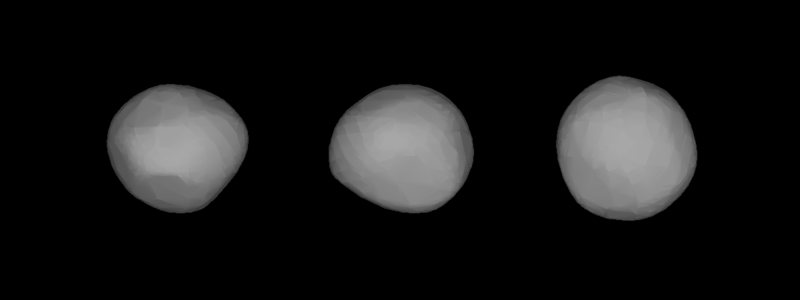

On August 27, Saturn will reach opposition. Look for it in the highest point in the sky during midnight local time, in the constellation of Aquarius. At about the same time the planet will reach perigee and be closest to us and so appear larger in the sky and easier to observe. Its apparent magnitude will be 0.4, so visible to the naked eye. This would also be a good opportunity to use binoculars or a telescope for better observations, including Saturn’s rings.
On August 30, the Moon and Saturn will be at conjunction. The two celestial bodies will share the same right ascension, passing within 2°29′ of each other. Less than two hours later, they will get even closer to each other at 2°16′ in an appulse (close approach) but no longer sharing the same right ascension. The Moon will be at apparent magnitude -12.8, and Saturn 0.4, both in the constellation of Aquarius.
And finally on the night of August 31 and September 1st, the Aurigid meteor shower will peak. It’s a rather small meteor shower with an average hourly rate of 6 meteors during the peak with ideal conditions. Some meteors can also be spotted between August 28 and September 5. They will appear to radiate from the constellation of Auriga. Their speed relative to Earth will be 66 km/s on average.
Moon Phases in August 2023
As you know, the Moon has a big impact on the visibility of celestial bodies in the night sky. So here are the Moon’s phases for this month:
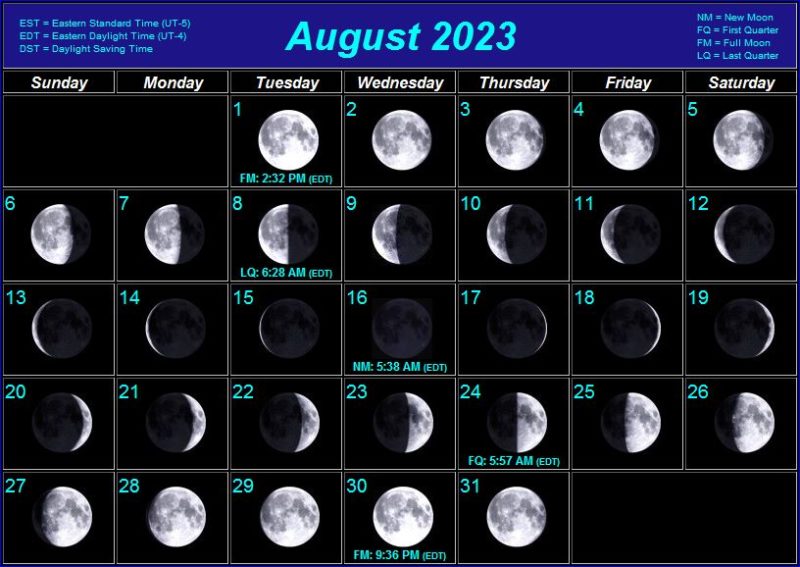

Positions of the Planets in August 2023
Mercury: The closest planet to the Sun can be seen at dawn and dusk travelling across the constellation of Leo. This planet, being the closest to the Sun, will appear to move quickly in the night sky and its position will change in the following weeks.
Venus: The sister planet can be seen near Mercury travelling across the constellation of Leo. Just like Mercury, Venus can only be seen at dawn and dusk.
Mars: The red planet can be seen in the constellation of Leo.
Jupiter: The gas giant is visible in the constellation of Aries. Jupiter can easily be spotted with the naked eye, even in highly illuminated cities.
Saturn: The ringed giant can be seen with the naked eye in the constellation of Aquarius.
Uranus: The gas giant can be seen in the constellation of Aries with the use of a telescope.
Neptune: The blue giant requires a telescope pointed in the constellation of Pisces in order to be seen.
Positions of Dwarf Planets and Large Asteroids in August 2023
Ceres: The asteroid belt’s lone dwarf planet can be seen in the constellation of Virgo with the help of a telescope.
Vesta: This large asteroid can be seen in the constellation of Taurus with a telescope.
Pallas: The asteroid can be observed with a telescope in the constellation of Leo.
Pluto: This distant dwarf planet can be found in the constellation of Sagittarius with the help of a large telescope.
Major astronomical events next month – September 2023
- September 6 – Ν Eridanids meteor shower peak.
- September 9 – September ε-Perseids meteor shower peak.
- September 14 – χ-Cygnids meteor shower peak.
- September 19 – Neptune at opposition.
- September 23 – September equinox.
- September 27 – Daytime Sextantids meteor shower peak.
Conclusion
In August, there will be several astronomical events worth observing. Conjunctions of the Moon with Saturn, Jupiter, M45, Mercury, and Mars, as well as the opposition of asteroids Hygiea and Flora, and Saturn, will provide fascinating viewing opportunities. Additionally, meteor showers such as the η-Eridanids, Perseids, κ-Cygnids, and Aurigids will grace the night sky. These events offer astronomy enthusiasts a chance to witness the beauty and wonders of our universe.
Sources:
See also: